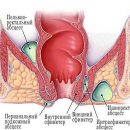Endometrial hyperplasia is an increase in the thickness of the inner layer of endometrial. The disease can be at any age. The causes of endometrial hyperplasia are diverse. In most cases, the disease develops with hormonal disorders.
Content
Concept about endometrial hyperplasia
Endometrium is the inner layer of the uterus. Endometrial hyperplasia is an increase in the thickness of the inner layer of the uterus. Can develop at any age as at 17 and 60 or more.
 The reason for the development of the pathological growth of the inner layer of the uterus is the violation of the hormonal balance of the woman, so endometrial hyperplasia is often combined with the impaired menstrual cycle.
The reason for the development of the pathological growth of the inner layer of the uterus is the violation of the hormonal balance of the woman, so endometrial hyperplasia is often combined with the impaired menstrual cycle.
In addition, endometrial hyperplasia can develop both a malignant process, so it is very important to identify this disease in time. In addition, the danger is also in the fact that in the early stages of his development, a woman can not disturb anything, and she may not suspect a beginnie disease.
Often the diagnosis of endometrial hyperplasia first exhibit when a woman begins to be examined about infertility. No pregnancy due to two factors. The first factor is the endometrium hyperplasia - the dormal state, and therefore the ovulation may be absent.
The second factor is the impossibility of implantation of the embryo on the modified mucous membrane of the uterus. It is clear that in such cases, infertility treatment by stimulation of ovulation, support for the lutein phase of the cycle, the use of anti-inflammatory therapy and extracorporeal fertilization will be unsuccessful until the main cause of infertility is also detected and is not liquidated.E. Hyperplasia Endometrial.
The difference of certain types of endometrial hyperplasia lies in the histological picture, t.E. Microscopic structure of the expansion sections of the mucosa obtained during scraping.
Causes of Endometrial hyperplasia development
First of all, these are hormonal disorders, the pathology of carbohydrate, lipid and other types of metabolism, gynecological diseases, disorders of menstrual and reproductive function, operational interventions on appendages and the uterke.
In addition, endometrial hyperplasia is often found in women suffering from hyperstrogeni, uterine, mastopathy, endometriosis, ovarian polycystic, violations of fat metabolism (disturbed synthesis of estrogen in adipose tissue), hypertension, elevated blood sugar levels, liver diseases, in which disposal is disturbed Gormons.
Outlook the doctors signs of anovulation, the absence of ordinary two-phase cycles. Thus, the detection of hyperplasia of endometrial has tremendous values for two purposes: prevention and treatment of infertility, as well as the prevention of endometrial cancer.
To identify hyperplasia endometrials use a variety of methods. The most common (but unfortunately, not always reliable) is ultrasound. The painting of the uterus allows you to often make a diagnosis of endometrial polyps, as well as to see the thickening of the uterine mucous membrane. Unfortunately, the accuracy of the method does not exceed 60%.
On X-rays can be visible to the phastature of the contours of the uterine cavity in the ferrous hyperplasia, and when endometrial polyps - filling defects. In addition, to avoid radioactive load and to reduce soreness can be carried out by echisterosalpingography (Echo GSG). Just like GHG, this procedure is primarily aimed at studying the patency of the uterine pipes, but the features of the uterine characteristic of the hyperplasia and polyps of the endometrium are perfectly visible on the screen.









